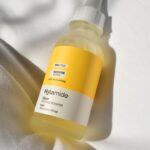Laser hair removal is a popular cosmetic procedure that utilizes concentrated beams of light to target and eliminate unwanted hair. The process works by emitting a specific wavelength of light that is absorbed by the pigment in the hair follicles. When the light is absorbed, it generates heat, which damages the follicle and inhibits future hair growth.
This method is particularly effective for individuals with darker hair and lighter skin, as the contrast allows the laser to focus on the hair without affecting the surrounding skin. As you consider laser hair removal, it’s essential to understand that the treatment typically requires multiple sessions for optimal results. Hair grows in cycles, and lasers are most effective during the active growth phase.
Therefore, you may need to schedule treatments every four to six weeks to ensure that all hair follicles are targeted effectively. The number of sessions required can vary based on factors such as hair thickness, color, and the area being treated. By familiarizing yourself with this process, you can better prepare for what lies ahead and set realistic expectations for your hair removal journey.
Key Takeaways
- Laser hair removal targets hair follicles with concentrated light to inhibit future hair growth
- Safety precautions include avoiding sun exposure and certain medications before treatment
- During treatment, expect a stinging sensation and slight redness in the treated area
- Potential risks include skin irritation, pigment changes, and rare scarring
- Before a session, shave the treatment area and avoid using any lotions or creams
Safety Precautions and Considerations for Laser Hair Removal
Before undergoing laser hair removal, it’s crucial to consider safety precautions to ensure a successful and safe experience. First and foremost, you should consult with a qualified professional who can assess your skin type, hair color, and medical history. This assessment will help determine if you are a suitable candidate for the procedure.
Certain conditions, such as pregnancy or specific skin disorders, may require you to postpone treatment or explore alternative hair removal methods. Additionally, it’s important to disclose any medications or supplements you are taking, as some can increase sensitivity to light or affect your skin’s response to the laser. You should also avoid sun exposure and tanning products for several weeks before your appointment, as tanned skin can increase the risk of complications during treatment.
By taking these precautions seriously, you can minimize potential risks and enhance the effectiveness of your laser hair removal sessions.
What to Expect During a Laser Hair Removal Treatment

When you arrive for your laser hair removal appointment, you can expect a thorough consultation with your technician. They will explain the procedure in detail and answer any questions you may have. Before starting the treatment, a topical anesthetic may be applied to minimize discomfort during the session.
While many people describe the sensation as similar to a rubber band snapping against the skin, the numbing cream can help alleviate any potential pain. Once you’re comfortable, the technician will use a handheld device to deliver laser pulses to the targeted area. You may notice a slight warming sensation as the laser works its magic on your hair follicles.
The duration of each session can vary depending on the size of the area being treated; smaller areas like the upper lip may take just a few minutes, while larger areas like the legs could take up to an hour. Throughout the process, your technician will monitor your comfort level and adjust settings as needed to ensure a safe and effective treatment. For more information on laser hair removal, you can visit the Mayo Clinic’s website.
Potential Risks and Side Effects of Laser Hair Removal
| Category | Potential Risks and Side Effects |
|---|---|
| Skin Irritation | Redness, swelling, and discomfort in the treated area |
| Pigment Changes | Lightening or darkening of the skin in the treated area |
| Burns | Blistering, crusting, or scarring in severe cases |
| Scarring | Permanent scarring or changes in skin texture |
| Eye Injury | Damage to the eyes if proper eye protection is not used during treatment |
| Unwanted Hair Growth | Stimulation of hair growth in adjacent areas |
While laser hair removal is generally considered safe, it’s essential to be aware of potential risks and side effects associated with the procedure. Some individuals may experience temporary redness or swelling in the treated area, similar to a mild sunburn. This reaction usually subsides within a few hours but can last up to a few days in some cases.
Additionally, you might notice changes in skin pigmentation, particularly if you have darker skin or have recently tanned. In rare instances, more severe side effects can occur, such as blistering or scarring. These complications are often linked to improper technique or inadequate aftercare.
To minimize these risks, it’s vital to choose a qualified provider who uses FDA-approved equipment and follows safety protocols. By being informed about potential side effects, you can make educated decisions about your treatment and take necessary precautions to protect your skin.
Preparing for a Laser Hair Removal Session
Preparation is key when it comes to ensuring a successful laser hair removal session. Before your appointment, you should avoid waxing or plucking hairs in the treatment area for at least four weeks. These methods remove hair from the follicle, which is counterproductive to laser treatment since the laser needs a hair shaft to target effectively.
In addition to hair removal practices, consider scheduling your appointment during a time when you can avoid sun exposure afterward. Sunburned or tanned skin can increase sensitivity and lead to complications during treatment.
It’s also wise to wear loose-fitting clothing on the day of your session to prevent irritation in the treated area.
Aftercare and Maintenance for Laser Hair Removal

Protecting Your Skin from the Sun
Following your treatment, it is essential to avoid sun exposure for at least two weeks, as your skin will be more sensitive and susceptible to damage from UV rays. If you must go outside, applying a broad-spectrum sunscreen with an SPF of 30 or higher is crucial to protect your skin.
Avoiding Irritants and Maintaining Skin Health
Additionally, refrain from using harsh skincare products or engaging in activities that may irritate the treated area for several days post-treatment. This includes avoiding hot baths, saunas, or vigorous exercise that could cause excessive sweating. Keeping the area clean and moisturized will aid in healing and help maintain your results.
Ensuring a Smooth Recovery
By adhering to these aftercare guidelines, you can ensure that your skin recovers well and that you achieve the best possible outcome from your laser hair removal sessions.
Managing Expectations for Laser Hair Removal Results
As you embark on your laser hair removal journey, managing your expectations is vital for satisfaction with the results. While many individuals experience significant hair reduction after just a few sessions, complete hair removal is not guaranteed for everyone. Factors such as hair color, thickness, and hormonal influences can affect how well you respond to treatment.
It’s important to have realistic goals and understand that multiple sessions may be necessary to achieve your desired outcome. Moreover, some individuals may notice that fine or light-colored hairs remain after treatment; these hairs may not respond as effectively to laser technology due to their lack of pigment. In such cases, alternative methods like electrolysis may be recommended for those stubborn hairs.
By maintaining open communication with your provider about your goals and concerns, you can work together to create a personalized treatment plan that aligns with your expectations.
Choosing a Qualified and Experienced Laser Hair Removal Provider
Selecting a qualified and experienced provider for your laser hair removal is one of the most critical steps in ensuring a safe and effective experience. Start by researching clinics in your area and reading reviews from previous clients. Look for providers who are licensed and certified in laser technology and have extensive experience performing hair removal procedures.
During your initial consultation, don’t hesitate to ask questions about their qualifications, equipment used, and safety protocols followed during treatments. A reputable provider will be transparent about their methods and willing to address any concerns you may have. Trusting your provider is essential for feeling comfortable throughout the process; after all, this is an investment in both your appearance and well-being.
By taking the time to choose wisely, you can embark on your laser hair removal journey with confidence and peace of mind.
If you are considering laser hair removal, it is important to understand how it works, its safety, and what to expect during the process. For more information on these topics, you can visit com/contact/’>contact page. And for information on their privacy policy, you can visit this link.
FAQs
What is laser hair removal?
Laser hair removal is a cosmetic procedure that uses a concentrated beam of light (laser) to remove unwanted hair. The laser targets the pigment in the hair follicles, damaging them and inhibiting future hair growth.
How does laser hair removal work?
During the procedure, the laser emits a light that is absorbed by the pigment in the hair follicles. This damages the follicles and inhibits future hair growth. Multiple sessions are usually required to achieve long-term hair reduction.
Is laser hair removal safe?
When performed by a qualified and experienced professional, laser hair removal is generally considered safe. However, there are some potential risks, including skin irritation, pigment changes, and rare cases of burns or scarring. It is important to follow pre- and post-treatment care instructions to minimize these risks.
What can I expect during a laser hair removal session?
Before the procedure, the hair in the treatment area may be trimmed. You will be given protective eyewear, and a cooling gel may be applied to the skin to help the laser penetrate the hair follicles. During the treatment, you may feel a stinging or snapping sensation as the laser pulses. After the session, you may experience redness and swelling in the treated area, which usually subsides within a few hours.





